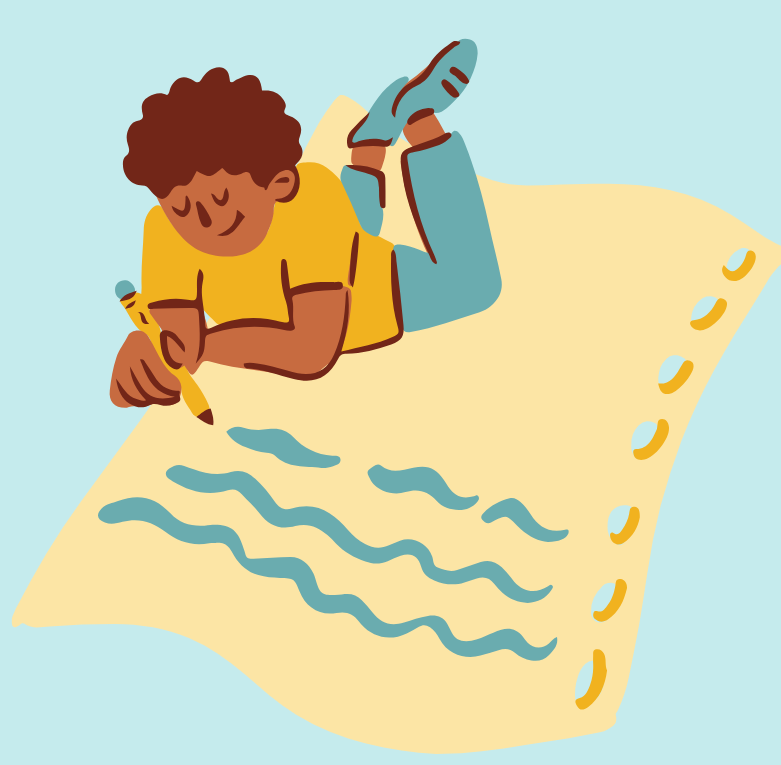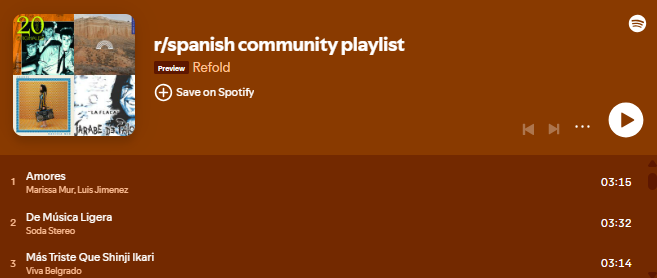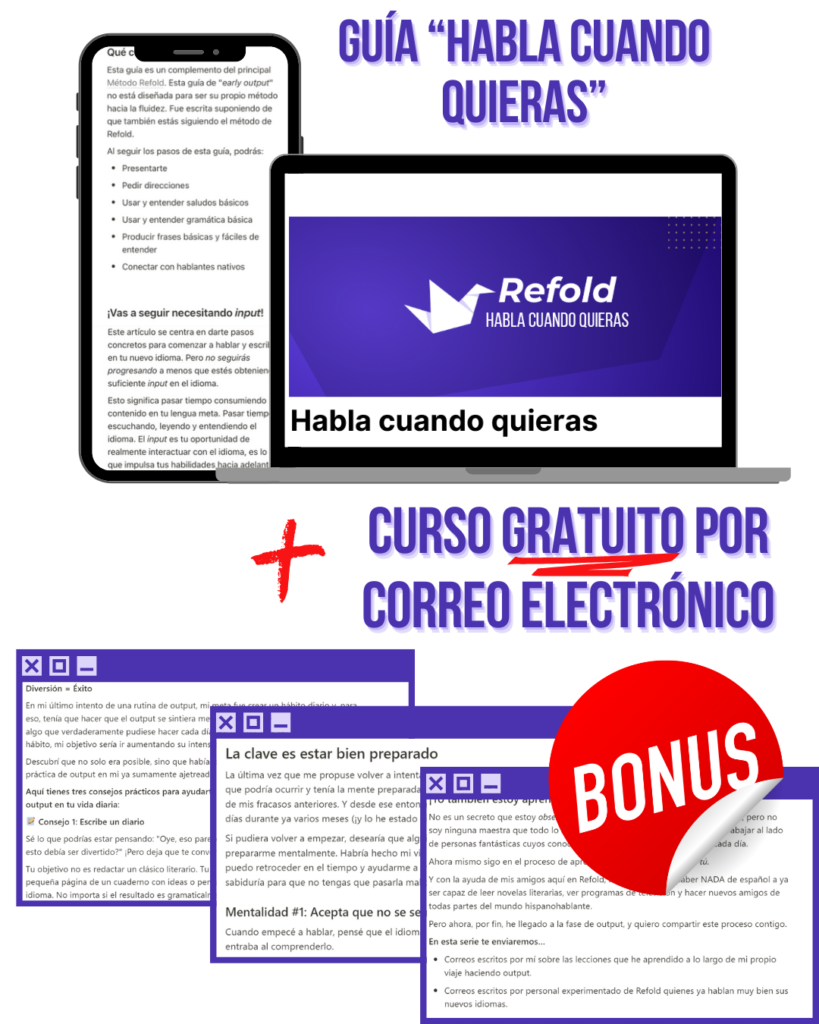
Hey language friends! Bree here! In a previous blog post, I shared how I use “how-to” articles in my target language to fill gaps in my vocabulary. Today, I want to share a technique that’s helped me improve my writing abilities even more….copywork!
Yes, copywork! Copying passages by hand has been a game-changer for me. Stick around, and I’ll show you exactly how to copywork for language learning, boost your memory, and improve writing in your target language.
Reading is Easy for Me… Noticing is Not

Not to brag, but I’m really good at reading Spanish. If I’m reading something in a genre I’m comfortable with, I can understand most of it—even if I stumble on an unfamiliar word here or there. Usually, I can keep up with the plot without grabbing a dictionary.
But here’s the thing: I still struggle with noticing small details.
How about you?
When you read, do you carefully track every… single… word… like… this? Or do you breeze through in chunks, skimming phrases instead of individual words? If you’re like most people (including me), you probably read in chunks. That’s great for speed—but it’s not so great when you’re trying to master the specific patterns of a new language.
How Copywork Helps with Noticing

When I read in Spanish, I often gloss over connector words, verb endings, or prepositions (like the, a, and, if, etc.). Why? Because I don’t need to notice them to enjoy a story. My brain fills in the blanks.
But here’s the catch: If I want to use those little words and endings correctly when I write or speak, I do need to notice them.
For a while, I figured this problem would solve itself if I just read more. For some people, that might work. But for me, it didn’t (thanks, ADHD).
I realized that if I wanted to start noticing the small details, I’d have to do it intentionally.
That’s where copywork comes in.
What is Copywork?
Ok, so you’re sold on the idea, but you’re probably wondering: “What is copywork anyway?”
Copywork is exactly what it sounds like: copying a passage by hand.
It’s a popular practice in the homeschooling community. Students and aspiring writers often use copywork and copy texts of famous authors in order to improve their writing skills in their native language.
The concept is the same for your target language! I look for passages that I enjoy in my target language and then copy them out by hand.
Like what you see?
Sign up now and we'll deliver even MORE amazing content like this right to your inbox!
- Receive our exclusive 6 SECRETS to language learning success email course.
- Stay motivated with weekly emails overflowing with helpful language-learning tips, tutorials, and more!
- Get behind the scenes access into the inner workings of Refold!
Get our 6 SECRETS to language learning success
Here’s How to Do Copywork for Language Learning

- Intensively read a passage. Look up any words or phrases you don’t know.
- Copy the passage by hand. While copying, focus on:
- Copying entire phrases at a time, not individual words. At first, this was tricky for me, but with time, I started remembering longer and longer chunks.
- Paying attention to the words I looked up earlier. If I forget one, I underline it and jot a quick definition in the margin.
- Reread the passage in your handwriting. I don’t know why, but reading something I wrote by hand makes it stick in my brain better. Plus, it’s really satisfying to look back at what I’ve done!
Why Copywork Works
Copywork forces you to slow down. Instead of skimming, you have to pay attention to every word, punctuation mark, and nuance of the text. It’s a mindful activity that trains your brain to notice patterns you might otherwise miss.
For me, this has been the best way to fix my bad habit of glossing over small details. And while copywork isn’t included in the Refold roadmap, many of us in the Refold community swear by it. A few of us even have a small copywork club!
More Copywork Tips

If you’re curious about trying copywork, here are a few tips to help you get the most out of it:
- Start slow. Just 10 minutes a day is plenty. It’s an intense activity, and overdoing it can lead to burnout.
- Write in cursive (if you know it and it applies to the language you are learning). Some studies suggest that cursive writing improves memory, but even if you can’t write in cursive, writing by hand will still help you focus and retain information better than typing.
- Choose content you want to emulate. Want to sound conversational? Blogs or podcast transcripts might be a better fit. Want to write beautiful prose? Try copying poetry or books.
Ready to try it?
What do you think? Have I convinced you to give copywork a try? I definitely recommend it! It’s a lot of fun, and it’s a great way to boost your concentration and notice things you’ve been struggling with!
Want to go beyond copywork and take your writing to the next level? Click the button below to read my blog about one of my favorite writing exercises—reaction writing!
Like what you see?
Sign up now and we'll deliver even MORE amazing content like this right to your inbox!
- Receive our exclusive 6 SECRETS to language learning success email course.
- Stay motivated with weekly emails overflowing with helpful language-learning tips, tutorials, and more!
- Get behind the scenes access into the inner workings of Refold!








